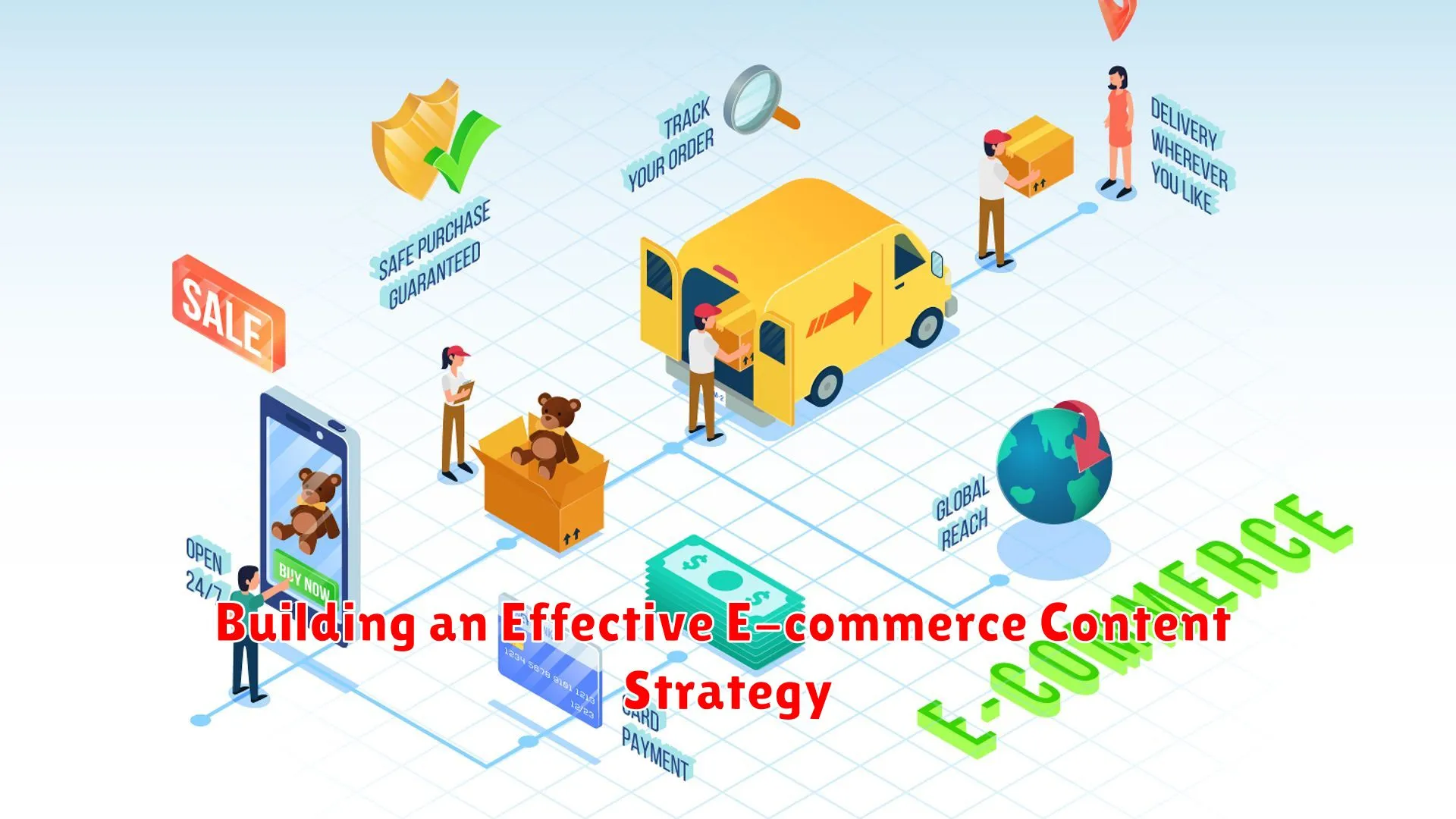In today’s competitive e-commerce landscape, a well-planned content strategy is essential for attracting and engaging customers. Learn how to build an effective e-commerce content strategy that drives conversions and boosts your online store’s success.
The Importance of Content in E-commerce

In the realm of e-commerce, content plays a crucial role in engaging customers, driving traffic, and ultimately boosting sales. A well-thought-out content strategy can make a significant impact on the success of an online store.
High-quality content not only helps in building brand credibility but also aids in gaining trust from potential customers. By providing valuable and informative content, e-commerce businesses can establish themselves as authorities in their respective industries.
Furthermore, search engines favor websites with relevant and fresh content, making it easier for potential customers to discover your online store. Content that is optimized for SEO can help improve your site’s visibility and search engine rankings.
Compelling product descriptions, engaging blog posts, informative videos, and visually appealing images are all essential elements of an effective e-commerce content strategy. These components work together to enhance the overall user experience and encourage visitors to explore your products and make a purchase.
Developing a Content Plan

When it comes to building an effective e-commerce content strategy, developing a solid content plan is crucial. A content plan serves as a roadmap that outlines the type of content you will create, the platforms you will use, and the schedule for publishing. Here are some essential steps to consider when developing your content plan:
1. Define Your Goals and Audience
Clearly define your objectives for the content strategy. Determine what you want to achieve through your content and identify your target audience. Understanding your audience’s preferences and needs is key to creating content that resonates with them.
2. Conduct Content Audit
Before creating new content, evaluate your existing content to identify gaps and areas for improvement. Analyze what content has performed well in the past and what hasn’t. This audit will guide you in creating a more targeted and effective content strategy.
3. Choose Relevant Content Types
Based on your goals and audience, select the most appropriate content types for your e-commerce business. This could include product descriptions, blog posts, videos, infographics, or user-generated content. Tailor the content types to match your audience’s preferences and behavior.
4. Create a Content Calendar
Develop a content calendar outlining when and where each piece of content will be published. This calendar helps you stay organized and ensures a consistent flow of content to engage your audience. Be sure to include key dates, events, and promotional periods in your calendar.
5. Implement SEO Strategy
Integrate SEO best practices into your content plan to improve search engine visibility and drive organic traffic to your e-commerce site. Identify relevant keywords, optimize meta tags, and create high-quality, relevant content that meets search intent.
By following these steps and developing a comprehensive content plan, you can build a strong foundation for your e-commerce content strategy that attracts and engages your target audience.
Crafting Engaging Product Descriptions

When it comes to building an effective e-commerce content strategy, crafting engaging product descriptions plays a crucial role in attracting and converting customers. Product descriptions serve as a virtual sales pitch, enticing potential buyers to make a purchase by providing them with all the information they need to make an informed decision.
Here are some key strategies to craft compelling product descriptions that drive sales:
1. Know Your Audience
Understand your target audience’s preferences, pain points, and buying behavior. Tailor your product descriptions to resonate with their needs and desires. Use language that speaks directly to them and addresses their unique challenges.
2. Highlight Key Features and Benefits
Clearly communicate the key features and benefits of your products. Use bold or italic text to emphasize important information. Focus on how the product solves a problem or improves the customer’s life.
3. Tell a Story
Engage customers by incorporating storytelling elements into your product descriptions. Create a narrative that evokes emotions and connects with the customer on a deeper level. Describe how the product fits into their lifestyle or solves a specific need.
4. Use Descriptive Language
Paint a vivid picture with words. Use descriptive language to evoke sensory experiences and help customers envision themselves using the product. Avoid generic descriptions and instead, opt for vivid details that create a memorable impression.
5. Optimize for SEO
Include relevant keywords in your product descriptions to improve search engine visibility. Use keywords that are commonly used by your target audience when searching for similar products. However, ensure that the descriptions remain natural and engaging for readers.
Utilizing Blogs and Social Media

When it comes to building an effective e-commerce content strategy, leveraging blogs and social media can play a crucial role in reaching your target audience and driving engagement. Both platforms offer unique opportunities to connect with customers, showcase products, and enhance brand visibility.
Benefits of Blogging for E-commerce:
1. Blogging allows you to create informative and engaging content that can educate consumers about your products, industry trends, and brand story.
2. It improves SEO for your e-commerce site by driving organic traffic through relevant keywords and quality content.
3. Building a community around your blog can foster customer loyalty and create repeat business.
Harnessing Social Media for E-commerce Success:
1. Social media platforms like Facebook, Instagram, and Twitter offer direct interaction with your audience through posts, stories, and live videos.
2. Visual content on social media can showcase products effectively and encourage engagement through likes, shares, and comments.
3. Influencer partnerships on social media can expand your reach and boost brand credibility among followers.
Integration and Consistency:
For a cohesive e-commerce content strategy, integrate your blog content with social media posts to maintain consistency in brand messaging and visuals.
Regularly promote blog articles on social platforms and engage with followers to build brand authority and drive traffic to your e-commerce site.
Measuring the Impact of Content on Sales

When it comes to building an effective e-commerce content strategy, one crucial aspect that cannot be overlooked is measuring the impact of content on sales. Understanding how your content influences purchasing decisions is essential in improving your strategy and driving revenue.
There are several key metrics that can help you measure the impact of your content on sales. One widely used metric is conversion rate, which measures the percentage of website visitors who make a purchase after engaging with your content. A higher conversion rate indicates that your content is effectively driving sales.
Another important metric is average order value (AOV), which measures the average amount customers spend per transaction. By analyzing AOV in relation to different types of content, you can identify which content is most effective in increasing the value of each sale.
Tracking repeat purchases is also crucial in measuring the impact of content on sales. A strong content strategy should not only attract new customers but also encourage repeat purchases from existing customers. Monitoring customer retention and loyalty can provide valuable insights into the effectiveness of your content.
Conclusion
In conclusion, a well-planned e-commerce content strategy is essential for driving traffic, engaging customers, and boosting sales in today’s competitive digital landscape.

